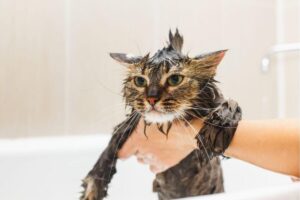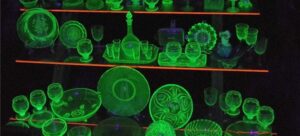If you’re a lawn enthusiast, you know how important it is to keep your lawn healthy and pest-free. Lawn insects like grubs can cause severe damage to your turf, leaving it brown and patchy. Luckily, there are many insecticides available in the market to help you deal with these pesky bugs. Two of the most popular insecticides are Milky Spore and GrubEx. In this article, we’ll take a closer look at these two products and compare them to find out which one is the best for your lawn.
Introduction
Keeping your lawn free from pests and diseases is crucial if you want to have a beautiful and healthy lawn. Insects like grubs can cause severe damage to your turf, making it look unsightly and uninviting. Fortunately, there are many insecticides available that can help you eliminate these bugs. Two of the most popular insecticides are Milky Spore and GrubEx. Both products are effective at controlling grubs, but they work differently. In this article, we’ll discuss the differences between Milky Spore and GrubEx and help you decide which one is right for your lawn.
What are Grubs?
Grubs are the larvae of various beetles, including Japanese beetles, June beetles, and European chafer beetles. They live in the soil and feed on the roots of grass, causing severe damage to your lawn. If left untreated, grubs can destroy large areas of turf, leaving it brown and patchy.
How do Milky Spore and GrubEx Work?
Milky Spore and GrubEx are both insecticides that are designed to control grubs. However, they work differently.
Milky Spore
Milky Spore is a biological insecticide that contains a bacterium called Bacillus popilliae. This bacterium infects and kills the larvae of Japanese beetles, but it’s harmless to other insects and animals. Milky Spore is applied to your lawn in granular form and takes several years to establish itself in your soil fully. Once established, Milky Spore can provide long-term control of Japanese beetle grubs.
GrubEx
GrubEx is a chemical insecticide that contains the active ingredient chlorantraniliprole. This insecticide works by disrupting the nerve function of grubs, causing them to stop feeding and die. GrubEx is applied to your lawn in granular or liquid form and provides quick control of grubs.
Milky Spore vs GrubEx: Which is Better?
Milky Spore and GrubEx are both effective at controlling grubs, but they have different pros and cons. Here are some of the key differences between these two products.
Time to Work
Milky Spore takes several years to establish itself fully in your soil and provide long-term control of Japanese beetle grubs. In contrast, GrubEx provides quick control of grubs, usually within a few days of application.
Longevity
Milky Spore can provide long-term control of Japanese beetle grubs, lasting up to 10 years or more. In contrast, GrubEx provides short-term control of grubs, lasting up to three months.
Effectiveness
Both Milky Spore and GrubEx are effective at controlling grubs, but they work differently. Milky Spore targets Japanese beetle grubs specifically, while GrubEx targets a broader range of beetle grubs.
Environmental Impact
Milky Spore is a biological insecticide that’s harmless to other insects and animals, making it an environmentally friendly option. GrubEx is a chemical insecticide that can be harmful to beneficial insects like bees and butterflies, as well as other animals.
Application
Milky Spore and GrubEx are applied differently. Milky Spore is applied to your lawn in granular form, while GrubEx is available in both granular and liquid form. Milky Spore should be applied in the fall, while GrubEx can be applied in the spring or fall.
Cost
The cost of Milky Spore and GrubEx can vary depending on the size of your lawn and the area you live in. Generally, Milky Spore is more expensive than GrubEx, but it provides long-term control of Japanese beetle grubs.

Overall Impact on Your Lawn
Milky Spore can provide long-term control of Japanese beetle grubs without harming other insects or animals. It can also improve the overall health of your lawn by reducing the population of harmful insects. GrubEx provides quick control of grubs, but it can also harm beneficial insects and animals.
Conclusion
When it comes to controlling grubs in your lawn, both Milky Spore and GrubEx are effective options. Milky Spore provides long-term control of Japanese beetle grubs without harming other insects or animals. It can also improve the overall health of your lawn. GrubEx provides quick control of grubs, but it can also harm beneficial insects and animals. Ultimately, the choice between Milky Spore and GrubEx depends on your specific needs and preferences.
FAQs
What are the signs of a grub infestation in my lawn?
A: The signs of a grub infestation include brown patches of turf that can be easily lifted away from the soil, and an increase in the number of birds and other animals digging in your lawn.
When should I apply Milky Spore to my lawn?
A: Milky Spore should be applied in the fall when the soil temperature is between 60 and 70 degrees Fahrenheit.
Can I use GrubEx and Milky Spore together?
A: Yes, GrubEx and Milky Spore can be used together for maximum control of grubs.
Will Milky Spore harm my pets?
A: No, Milky Spore is harmless to pets and other animals.
How often should I apply GrubEx to my lawn?
A: GrubEx should be applied once a year in the spring or fall for best results.




